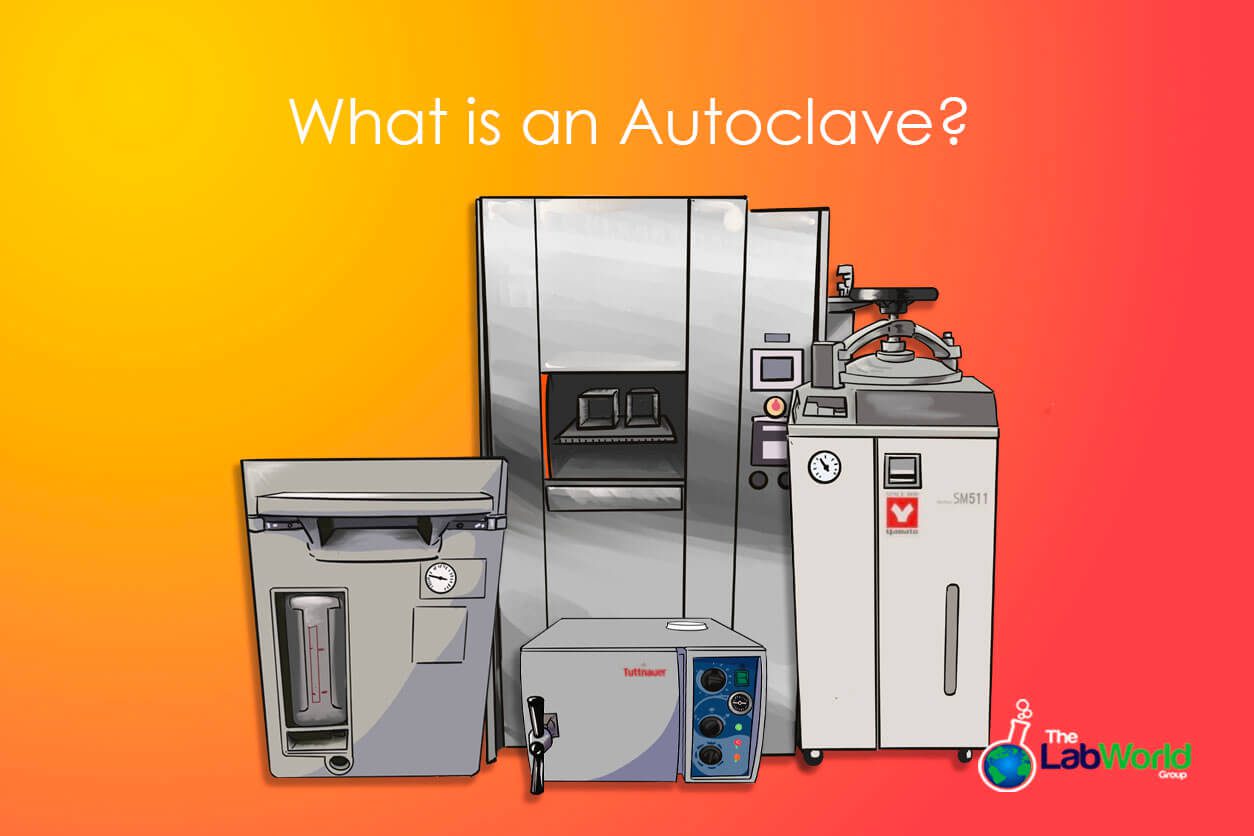
A Guide To Autoclaves
Amanda2024-05-10T13:05:19+00:00What is an Autoclave?
Autoclaves provide an essential function for a laboratory – sterilization. An autoclave is a machine that combines high temperature and atmospheric pressure to sterilize any items placed inside. Some items typically loaded into autoclaves include laboratory glassware, tools such as forceps, syringes, pipette tips, surgical instruments, and laboratory and medical waste. Autoclaves can vary greatly, from the smallest benchtop autoclave to freestanding units or even units built into the wall. You will find autoclaves in all laboratory and medical settings – from research and clinical labs to doctors’ offices, hospitals, industrial manufacturing plants, and more.
A Brief History of Autoclaves
Humans had known the need for sterilization and disinfection since around 3000 B.C. when Egyptians used pitch and tar with aromatics to embalm bodies. Around the second century, a Greek medic named Galen boiled the instruments he used to treat his charges, Roman Gladiators.
We wouldn’t have the autoclaves we know today without a precursor, the “steam digester,” invented by Dr. Denis Papin in the 17th century. The steam digester acted as a pressure cooker but with the crucial addition of a safety valve. There have been many pressure-related accidents since the idea of pressure first emerged in the 17th century, and the addition of this safety valve meant that steam would be released if pressure rose too high.
Fast-forward to the 1800s, when Charles Chamberland was working with Louis Pasteur at the Pasteur Institute. He discovered that to kill certain spores, it was necessary to heat the liquid to 115°C for twenty minutes. His continued work on new sterilization methods led to the autoclave that we know today.
What does an autoclave do?
Autoclaves use steam under pressure to kill bacteria, fungi, or spores on items placed inside. The items are placed inside a pressure vessel, usually called the chamber, and heated to a specific temperature for a particular amount of time. The autoclave process has three phases: The Conditioning phase, the Exposure phase, and the Exhaust phase.
In the Conditioning phase, air is removed from the chamber. Depending on the type of system, air can be removed using a vacuum system or a series of steam flushes and pressure pulses. Next, steam is rapidly introduced to the chamber in the Exposure phase, increasing pressure and temperature until it reaches the predetermined level. This exposure and time results in the sterilization of the items. Finally, during the exhaust phase, the heat is turned off, and the sterilizer drain is opened, releasing the steam and allowing the items to cool down and dry off.
Types of autoclaves
While all autoclaves are used for the same purpose, several types exist. An autoclave can be small enough to fit on a benchtop, be mounted on the wall, or even big enough to hold an entire airplane fuselage! There are medical autoclaves and industrial autoclaves. As the name suggests, medical autoclaves sterilize medical equipment, such as surgical drapes or linens, scalpels, forceps, implanted medical devices, and more. Industrial autoclaves, such as pressure-treating lumber or rubber in car tires, are often used in manufacturing processes.
There are gravity autoclaves and vacuum system autoclaves. A gravity autoclave introduces steam into the chamber, forcing air through a drain vent. The steam is drained through this same vent when the cycle is complete. This process is simple and reliable. Vacuum autoclaves use a series of pressure injections and vacuum draws, known as pulses, to remove air from the chamber. These pulses allow the steam to be pulled into areas it might otherwise not have been able to reach.
The type of system you need depends on the items you will sterilize. Gravity sterilization is used for non-porous, simple items like glassware, waste, or utensils. Vacuum sterilization is required when items are porous or have small openings, such as animal bedding, wrapped goods, or cages.
Manufacturers of autoclaves
There are many different brands of autoclaves, and finding the right one depends on several factors. The most prominent brands available are Yamato, Tuttnauer, and Tomy. Yamato specializes primarily in moveable autoclaves conveniently wheeled around the lab space. Tuttnauer has everything from benchtop units that you can place next to your workstation to wall units with much larger capacity. The Japanese brand TOMY features a slim line design that does not take up too much lab space while accommodating three stackable baskets per load.
Conclusion
Autoclaves are an essential tool for laboratories, medical applications, and industry. The disinfection and sterilization of tools are vital to eliminate any cross-contamination that may occur and to rid items of any harmful organisms that may be present.
Whether you need a gravity autoclave or an autoclave fitted with a vacuum system, there are many options from many reputable manufacturers. You can trust The Lab World Group with your autoclave needs. We have over thirty years of combined experience servicing these instruments. We meticulously check every aspect of the system before we sell, so you can be confident that you’ll receive top quality!













